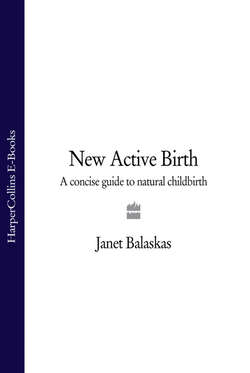Читать книгу New Active Birth: A Concise Guide to Natural Childbirth - Janet Balaskas - Страница 10
What is wrong with obstetrically managed birth?
ОглавлениеGiving birth can, and usually does involve hours of intense labour and a great deal of pain, effort and endurance on your part. Naturally the prospect is quite awesome and you will probably approach the birth of your child with some fear and apprehension about what is to come.
To many women the prospect of a painless, effortless, managed birth might, at first, seem to be an attractive proposition. After all, you might ask, why suffer needlessly when medication and modern technology is readily available to make the birth easier, quicker and less painful?
Regretably, it is not as simple as all that. Every interventive obstetric technique has known side effects for mother and baby, while many subtle or long-term effects may not yet be apparent. When help is genuinely needed the benefits of the intervention may well outweigh the risks. However, routine use of obstetric management tends to complicate birth unnecessarily.
Doris Haire in her booklet, The Cultural Warping of Childbirth (3), has written an excellent report on obstetrics in the USA where high-tech birth is the norm and more deeply entrenched than in most places, and now provides a model for developing countries where traditional birth practices are disappearing.
Haire points out that the infant mortality rate in the USA is amongst the highest in the world. There is also a staggering incidence of neurological impairment amongst American children which, she feels, is attributable largely to the ‘unphysiological practises which have become so much a part of American obstetric care’. She lists an abundance of scientific literature and research to substantiate her remarks (see Recommended Reading).
We have known since the 1960s that all obstetric medications given to the mother, whether they are used to quell nausea, to induce labour, to relieve pain or to anaesthetise, do cross the placenta and do alter the baby’s environment in the uterus, entering the baby’s circulatory system and hence the baby’s brain within seconds or minutes. Contrary to what many women are told, this includes regional anaesthetics such as epidurals (4).
The baby’s central nervous system forms and develops rapidly in the last part of pregnancy, during the birth itself and during infancy, and is susceptible to the effects of drugs given around the time of birth and after. We have only to recall the thalidomide tragedy to realise that the testing of the safety of these medications is often sorely inadequate. Of course, it is important also to bear in mind that babies vary in their vulnerability to the effects of these drugs and, in instances of real need, the judicious and minimal use of medication is usually successful. However, in antenatal clinics and hospitals, mothers are usually uninformed about the hazards or side effects involved in taking such medications and are deluded into assuming that there are no risks involved.
Let us take a look at some examples of the most widely used medications for labour and birth, and their more common side effects. I have deliberately omitted the more severe and rare complications but readers who are interested can look up the research references listed here.
